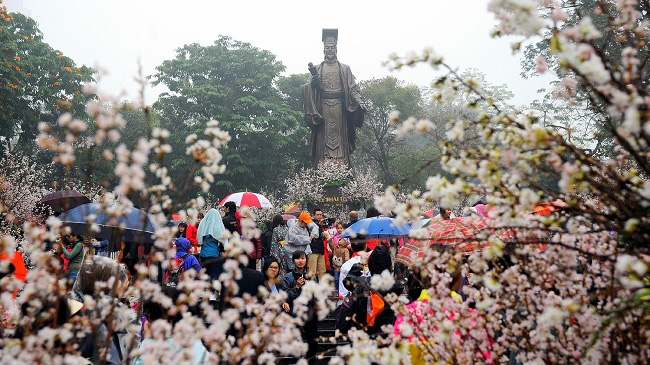


|
The announcement was made at a press briefing organised by the
Hanoi Department of Culture and Sports on March 19, concerning the activities
of the festival, held on the occasion of the 45th anniversary of
Vietnam-Japan diplomatic ties (1973-2018).
The exchange festival, elevated from the previous annual cherry
blossom festival, will feature 12 mini scenes on Japanese and Vietnamese
culture, which have been created with a combination of cherry blossoms and
types of Vietnamese flowers.
An art performance on the opening night of the 2017 festival.
(Photo: vietnamnet.vn)
Especially, on this occasion, the Japanese side will present and
plant 200 cherry trees at Hanoi’s Hoa Binh (Peace) Park. The event, scheduled
for March 23, will see the presence of two beauties from Japan – Miss Cherry
Blossom 2018 and Cherry Blossom Princess 2018.
Yosakoi dances (traditional Japanese dance) and 16 pavilion
introducing Japanese culture, such as tea ceremony, Go, xiangqi, kimono and
yukata (traditional Japanese costumes), will be among the noticeable
highlights of the four-day event, in addition to performances of traditional
music and arts of Vietnam and Hanoi, and an exhibition featuring cherry
blossom photos taken by Japanese photographer Iwahori.
The quintessence of Vietnamese and Japanese cuisine will be
introduced to the public at the Hanoi Children’s Palace, while investment and
tourism promotion activities between Hanoi and Japan are also scheduled as
part of the exchange festival.
|
Source: NDO